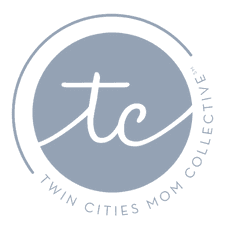In Minnesota our spring season is a little (or a lot) later than almost every other spot in the country. That can leave us staring longingly at those bare branches, willing them to bud. As someone who grew up where spring started in well, spring, I definitely longed for leaves in early April those first years here. However, I’ve since discovered that if looking up into the trees isn’t rewarding, looking down at the spring wildflowers can be and is dare I say better than a green leaf.

{Aptly named Spring Beauties}
Flowers! We get flowers here in Minnesota long before the trees have a chance to shade everything in. Beautiful, delicate, and intricate native wildflowers take advantage of the extra sun bare trees let by and don’t mind a good ‘ole April (or even May) snow. While most flowering plants slowly taunt us with a few leaves first, stems, and then everlasting buds, spring wildflowers get to the good stuff right away, focusing on the flowers first.

{Trout Lily and Wild Violets}
These flowers are vital for emerging native bees and other pollinators who wake up rightly hungry after a long northern winter. That can also be said for us non-flying species. I can’t think of a better way to welcome everyone to the end of the cold and snowy road than beautiful colors dotting the landscape.
To bask in their beauty you do need to be a little on your toes. Most spring wildflowers bloom for only a short time before the tree canopy fills in and they use what sun they have left to go to seed. So here are tips I’ve picked up to get it while the getting is good.
- Know before you go. If you’re visiting a state or local park, chances are they have lots of information on when you can expect to see which flowers. Many have checklists and staff love telling you what has been seen popping up and where.
- Watch your step. Spring wildflowers and other seedlings are typically very small and prone to damage when the ground is soft and their roots are not yet strong. Stay on trails and heed signage to stay out of sensitive areas so they’ll be there next year too.
- Visit early and often! Not all wildflowers bloom at once. You’ll often see an entirely different scene each week. While summer is great, spring time allows you to watch as everything comes to life. You’ll be ahead of the pack and the mosquitoes.
- Just missed your favorite flower? Head north! Can’t wait a couple weeks? Head south! While one bloom is going out in your neck of the woods, it’s probably just getting going an hour away.
- Check out different terrains and especially elevations. Woods, prairies, near water, valleys, and cliffs all offer unique habitats and so you’ll find a wide variety of flowers and nature.
- Bring a guidebook or download iNaturalists to identify what you see. Especially if you’re bringing along children, you’ll get “what’s that?!” at least a dozen times. A book specific to your state organized by color is easy to use and really makes it more fun for kids and adults alike. Why is it called Bloodroot? Is that what Dutchman’s Breeches really look like?
- Give kids a camera. Not only will they practice their nature photography, but they’ll be less likely to have free hands to pick something before you can intervene. It can get them more engaged if just “looking with our eyes” or checking flowers off a list isn’t quite stimulating.

{She took the best pictures of the day!}
You also don’t have to travel far. Spring wildflowers are everywhere even in our neighborhood parks and yards. In yards you’ll usually find more cultivated types, like tulips and crocuses, but if allowed to grow, native species will find a place too. More and more cities and states are encouraging pollinator friendly yards through grants, so you might happen upon a yard full of flowers! And even in the middle of the city, you can find wildflowers flourishing in the smallest of woody areas.
Better yet, plant some of your own to look forward to each spring! Native species not only are easy to grow (they’re made for this stuff after all), but you’ll find them much more attractive to swarms of beautiful butterflies and birds than hostas or European irises. Garden centers and nurseries almost always have a native plants section and can let you know which will be the first to give you those beautiful blooms before you’ve even hooked the hose back up.
Looking to bring some inside to enjoy? Leave the little native flowers for the bees and bring in those tulips before they’re done. Native blooms are short lived and typically won’t do well trimmed. Any lilac bush can usually spare a few sprigs, will last a while, and the scent is heavenly. Orange day lilies are actually quite aggressive and take over native plants, so feel good about bringing in as many of them as you can before they spread their seeds.

{Lilacs arrange themselves.}
Remember, April showers brings May AND April flowers! Spring is here before you know it, just look to the ground. Happy spring wildflowers season!

{Large-flowered Bellwort}

{Dutchman’s Breeches}
Article originally posted on May 3, 2020.



